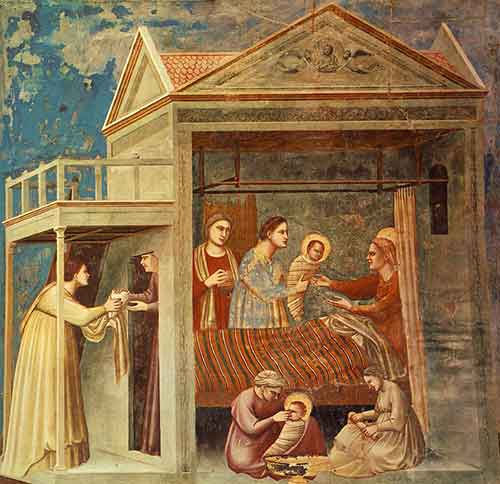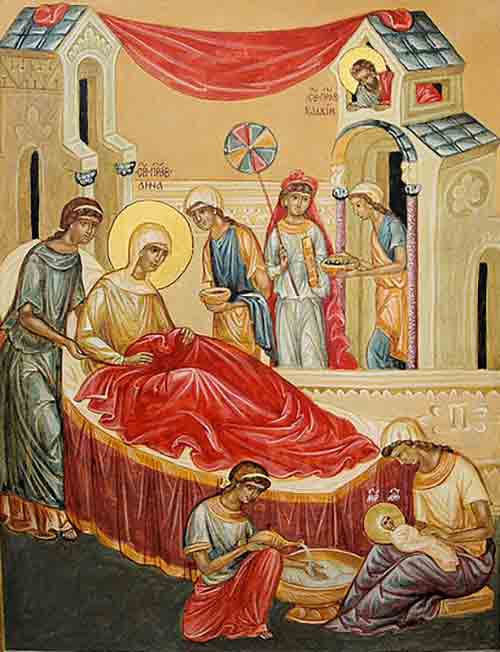
A New Zealand Prayer Book He Karakia Mihinare o Aotearoa (ANZPBHKMA) celebrates The Birth of the Blessed Virgin Mary, Mother of our Lord on September 8. Other Anglican provinces (e.g. CofE, Canada, Australia) commemorate both the birth and the conception (December 8) of the Blessed Virgin Mary. This province does not have her conception on the agreed formularies, but of course, being the Anglican Church of Or, it is clear that you can celebrate that if you wish to.
The commemoration is titled variously as the Nativity of the Blessed Virgin Mary, the Nativity of Mary, Marymas, or the Birth of the Virgin Mary,
The Birth of Mary is recounted in the apocryphal Gospel of Saint James. The earliest record of this feast comes from the 6th Century. It is found in the Gelasian Sacramentary (seventh century) and the Gregorian Sacramentary (eighth to ninth century). It is in the Sarum Missal. The 1549 and 1552 Books of Common Prayer omitted it. The 1559 BCP restored it (and Mary’s Conception on 8 December). It (and the Conception) was retained as a Black Letter day in 1662 BCP [the older feast, on 15 August, was restored only in more recent Calendar renewal]. BCP (TEC) only celebrates 15 August.
Aotearoa, New Zealand, and Polynesia, hence, commemorates three births: Christ’s, Mary’s, and John the Baptist’s (ANZPBHKMA does not indicate that the 24 June celebration, in fact, is John the Baptist’s birthday – 29 August IS indicated to commemorate his death: “The Beheading of St John the Baptist”). This province only commemorates one conception in its formally agreed Calendar – other Anglican provinces commemorate two (Mary’s being the second).
In the Northern Hemisphere, there are longstanding traditions on this day of blessing of the summer harvest and autumn planting of seeds. Winegrowers in France called today “Our Lady of the Grape Harvest”. The best grapes are brought to the local church to be blessed and some bunches are attached to hands of the statue of Mary. A festive meal which includes the new grapes is held. Today, in the Alps of Austria is “Drive-Down Day”. The cattle and sheep are led, with much decoration and festivity, from their summer pastures in the slopes and brought to their winter quarters in the valleys. Milk from this day and all the leftover food are given to the poor in honour of Our Lady’s Nativity. (The Holyday Book by Francis X. Weiser, SJ).
In the Southern Hemisphere, work could be done to creatively connect traditions from the September Ember Days, Rosh Hashanah (the Jewish New Year), the start of Southern Hemisphere Spring, and Marymas. This could connect with September’s Creation Season focus. There are plenty of traditions connected to Northern Hemisphere Marymas – it is time for the Southern Hemisphere to get with the programme!
Further reading: The Birth of the Blessed Virgin Mary



